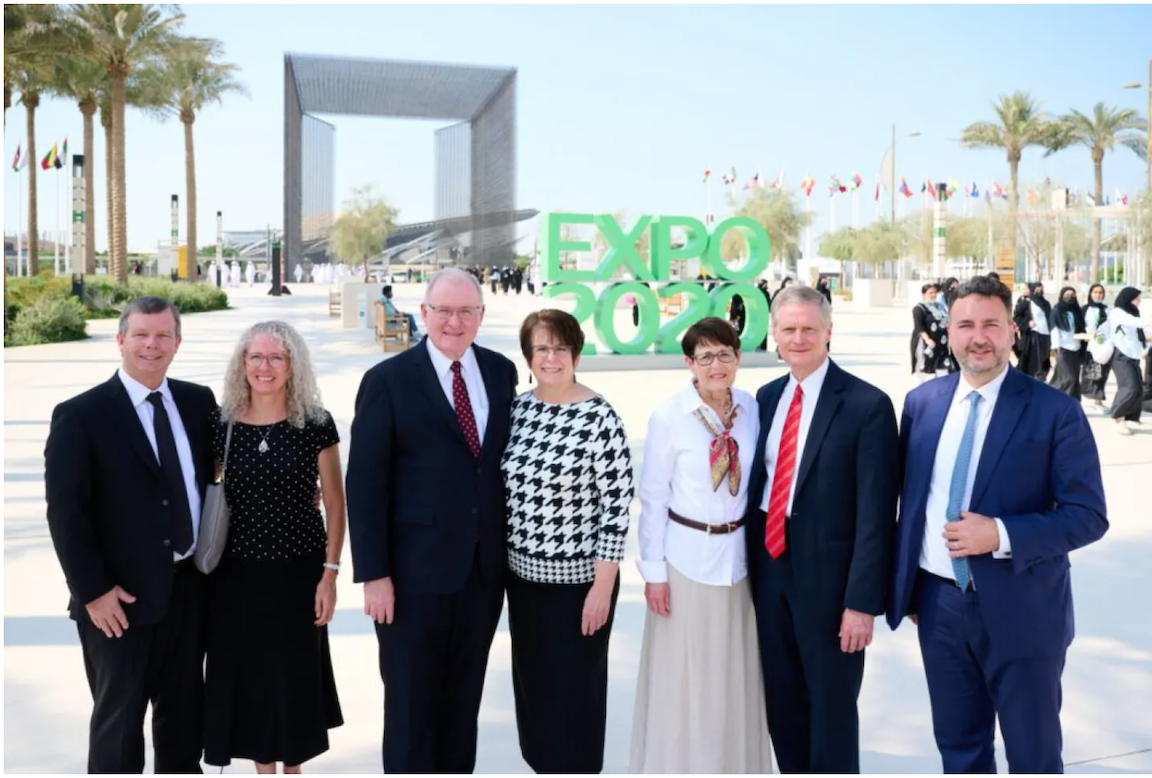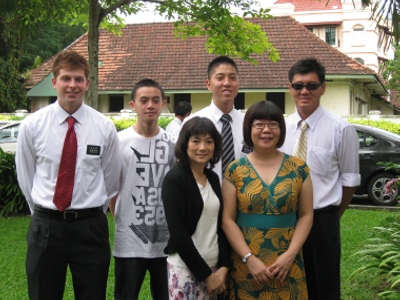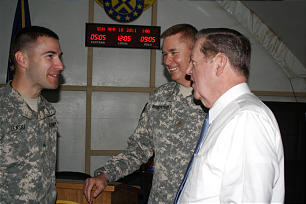Missionary Work 2: Malaysia, Russia, Middle East
A Pearl in the Orient — Penang, Malaysia
Matthew 13 includes a one-sentence parable ─
- “Again, the kingdom of heaven is like unto a merchant man, seeking goodly pearls: Who, when he had found one pearl of great price, went and sold all that he had, and bought it” (vv. 45–46).
Penang, Malaysia is typified in this scriptural vignette. This island paradise is known as “The Pearl of the Orient.” Back in the 1700s its strategic location at the top of the Straits of Malacca made it the perfect trading post for the British East India Company. Merchants have stopped here for hundreds of years. Georgetown, Penang’s World Heritage neighborhood on Penang Island, became a bustling port city of the international spice trade. The population burgeoned. Malay fishermen were joined by indigenous settlers from the mainland. Over time, Chinese and Indian laborers, Siamese, Burmese, Arabs, Armenians, Acehnese, and even Scots, Germans, and other Europeans migrated to Penang.
The spice trade collapsed as Napoleon launched his wars, but Penang re-emerged as Malaya’s financial capital. Today, Penang is still a melting pot of Asian cultures, famous for its eclectic cuisine and emerging as the “Silicon Valley” of the East. It is the rare Islamic state that accommodates different religions and cultures ─ mosques, churches, and Chinese and Indian temples coexist as well as do the friendly people of myriad faiths. Each faith has its own festivals, and Penang celebrates them all. With five New Year’s celebrations a year, any time can be a time of renewal.
The Singapore Mission of The Church of Jesus Christ of Latter-day Saints opened in 1974, with Malaysia as a part of the mission. In those days, missionaries spent just one month at a time in Malaysia in order to conform to government policies. The government officially recognized the Church in 1977, and the Church procured its first property on the outskirts of Kuala Lumpur, Malaysia’s capital. There were few members of the Church in the country, and most were American or Australian “expats.” The first district was organized in 1981. The country was dedicated for the preaching of the gospel in 1995 by Elder Joseph B. Wirthlin.
Malaysia is still part of the Singapore Mission. Missionaries do not teach the Muslim Malays, but do teach expatriates and Malaysians of faiths other than Islam. There are over ten thousand members of the Church in Malaysia in twenty-seven congregations.[1]
On Penang Island there is a small jewel ─ the Penang Branch of The Church of Jesus Christ of Latter-day Saints ─ part of Ipoh District, along with the branches of Butterworth, Ipoh, and Sitiwan, all on the mainland. On conference Sunday, the first weekend of October 2010, the branch held a fast and testimony meeting. The branch planned to watch general conference according to the traditional conference schedule, but one week late, on DVD. The Penang Branch conducts its meetings in English, one of the three official languages of Malaysia (the others being Malay and Mandarin Chinese). Two expatriate families from the U.S. were in the branch, both working with Intel. The other members were mostly Asian, but with a variety of backgrounds and ethnicities.
Sacrament meeting began on a spiritual high, with three confirmations. Two young men from Mongolia were confirmed, along with a sister of Chinese descent, formerly a Buddhist. Elders Robison and Vance had taught her the gospel in fluent Mandarin. Hers had been a journey of over ten years of studying religious and philosophical texts. When she read the Book of Mormon, though her mind couldn’t comprehend all the words, she felt a wonderful spirit of truth, a spiritual power she had never felt. When she prayed to know if the Book is true, she felt not only comfort and peace, but the healing of skin problems that had plagued her. Her doubt had to do with giving up coffee, which she dearly loved. However, after a week of living according to the Word of Wisdom, coffee was no temptation.
She is not the only member of the branch whose journey has been long. A brother also bore his testimony. A traveler through books and various philosophies, he had delved deeply into the realms of eastern religious thought, reading hundreds of books through the years. Though comforted by hatha yoga, the mantras of Hinduism seemed to unleash a streak of bad fortune in his life with attacks on his health and well-being. When he finally opened himself to Christ and closed other doors, he discovered that the truth sets one free.
The First Stake in Russia
The opening of the Kiev Ukraine Temple in 2010 was an indication to members of The Church of Jesus Christ of Latter-day Saints living in Russia that the Church is growing in the former Soviet Union. On June 5, 2011, Elder Russell M. Nelson, then of the Quorum of the Twelve Apostles organized the Moscow Russia Stake, the first stake in Russia. More than 1,000 people were in attendance.
The Church of Jesus Christ was afforded initial recognition in 1991. In May 1998, the Church was formally recognized by the Russian Federation's Ministry of Justice as a centralized religious organization. At its creation, the Moscow Russia Stake contained six wards and three branches.
- "The Saints in Russia, but most particularly those in Moscow, stepped into a new Russia with the formation of this stake," he noted in an e-mail to the Church News. "Until the [organization of the stake], the directing keys of the priesthood had resided exclusively with the mission presidents, almost all of whom were foreigners. If, for some reason, the mission presidents would have left Russia, the priesthood keys would have gone with them" (Elder Dennis B. Neuenschwander). The first president of the Moscow stake is a Russian, Yakov Mikhaylovich Boyko.
Joseph Smith called missionaries to Russia in 1843, and Church leaders visited the country in 1866. In 1895 the Lindlöf family joined the Church in St. Petersburg.
Church Leaders Visit Nations in Middle East
Elder Jeffrey R. Holland of the Quorum of the Twelve Apostles visited eight Middle Eastern Nations in April 2011. During the trip, Elder Holland addressed several thousand members of the Church. Growth in the area prompted the division of the former Manama Bahrain Stake into the Manama Bahrain District and the newly named Abu Dhabi Stake. The Manama Bahrain Stake was organized 28 years previous by then Elder Boyd K. Packer.
Honoring the traditions and laws of the countries in the Middle East, The Church of Jesus Christ of Latter-day Saints does not proselyte Muslim citizens. However, people who were already members of the Church have entered Middle Eastern countries for work, and Christians in the countries have converted to the restored gospel of Jesus Christ, growing church membership in the area."Elder Holland noted that although this has been a time of very serious political unrest in the region, the members of the Church are doing 'wonderfully well and feel very safe.'" [2]

Elder Holland concluded his trip in Israel, where he visited and dedicated the new meetinghouse for the Tel Aviv Branch. Other nations included in this trip were Qatar, Oman, Kuwait, and Jordan.
More recently, other leaders of the Church of Jesus Christ have visited and ministered in the Middle East. Elder David A. Bednar ministered in Dubai, United Arab Emirates, and encouraged members to find hope in the Savior and prepare for the temple that was announced to be built in Dubai. He also traveled to Jordan where he visited members in the Amman Branch. The branch includes Jordanians, those from other Middle Eastern countries and families of employees who work at various government embassies in Jordan. Elder Bednar encouraged them to study the Book of Mormon and learn how it applies today. “The Book of Mormon is not a book of history. The Book of Mormon is a book about the future,” he said.
President Dallin H. Oaks had visited Jordan in March 2017, and Elder Holland in November 2015. Elder Holland accompanied President Russell M. Nelson on his tour to Jerusalem in April 2018.
Jean B. Bingham, then-Relief Society General President, and her counselor Sharon Eubank, visited Church branches in Cairo, Egypt, and Dubai, United Arab Emirates, in October 2021. They also visited areas of Iraq where families have been relocated in tent communities.
Elder Bednar visited Sulaymaniyah, Kurdistan, in February 2019. In 1961, then-Elder Spencer W. Kimball and Elder Howard W. Hunter traveled to Iraq.
In April 2023, Elder Dieter F. Uchtdorf and his wife, Harriet, visited Israel. Elder Uchtdorf first visited the Holy Land in 1966 as a young Lufthansa pilot flying the globe. He has returned numerous times, first during his professional time with family and friends and later returning several times on assignment as a general authority. The most recent previous visit was 10 years ago as a counselor in the First Presidency.[3]

